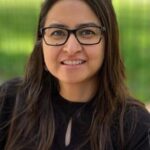Volume 38 Number 1 | February 2024
Aditi Sarkar, MS, MLS(ASCP)CM, ASCLS Developing Professionals Forum Chair, ASCLS Board of Directors

What does it mean to be diverse, inclusive, and equitable? Diversity is more than just a buzzword; by its very nature, diversity encompasses a spectrum of human characteristics and experiences while recognizing and celebrating the differences that make each person unique. The confusing nature of diversity arises from the challenge of navigating this expansive and dynamic concept while attempting to balance differences without falling into the trap of stereotypes or assumptions. Recognizing diversity as a strength while avoiding tokenism or superficial inclusivity is critical.
Diversity in ASCLS encompasses a mosaic of identities, ranging from race, ethnicity, gender, age, sexual orientation, socioeconomic status, and educational background. Acknowledging and embracing this diversity is a moral and strategic necessity for the laboratory community to deliver quality laboratory services.
“The confusing nature of diversity arises from the challenge of navigating this expansive and dynamic concept while attempting to balance differences without falling into the trap of stereotypes or assumptions.”
Inclusivity goes beyond mere representation; it creates an environment where individuals from diverse backgrounds feel valued, respected, and heard. Achieving inclusivity means breaking down barriers, eliminating biases, and fostering a culture that encourages collaboration, understanding, and shared decision-making.
Equity, a driving force and cornerstone of this framework, ensures that professional growth, recognition, and advancement opportunities are accessible to all members, irrespective of their background. It recognizes and addresses systemic barriers that might perpetuate disparities in access to resources or hinder the career progression of individuals from underrepresented groups in medical laboratory science.
Belonging is the culmination of diversity, inclusivity, and equity. It is the assurance that every member is an integral part of a community where their skills, expertise, and unique perspectives contribute to the collective success of society, and one’s contributions are recognized and appreciated. In ASCLS, creating a sense of belonging is vital for fostering collaboration and innovation.
Potential strategies to ensure every member feels they belong in the ASCLS community. As a microcosm of the broader scientific community, it is paramount that ASCLS members coexist and thrive in an environment that celebrates their diversity. By creating a culture of safety, ASCLS can motivate individuals to express their perspectives without fear of judgment.
Inclusivity and equity are tools to dismantle barriers and foster belonging by ensuring diverse voices are heard, actively sought out, and considered in decision-making processes.
Diversity within ASCLS can be promoted by establishing measurable goals that foster an inclusive and equitable culture. The present leadership recognizes that individuals belong to multiple identity groups simultaneously; the intersection of these identities shapes their experiences. Establishing policies with a nuanced understanding of intersectionality ensures that strategies for promoting diversity are comprehensive and consider the unique challenges faced by individuals with intersecting identities. Enabling diverse representation in leadership positions within ASCLS sets an example and helps ensure a more inclusive decision-making process.
The existing mentorship and leadership programs can be further strengthened to support and guide individuals from underrepresented backgrounds. Awareness and understanding among ASCLS members to appreciate different cultural norms, communication styles, and perspectives can be encouraged through cultural competency and unconscious bias training. Educational programs, such as workshops, seminars, and online resources, can help nurture a culture of inclusive language and communication by using terminology that reflects the diversity of the membership and avoiding language that may inadvertently marginalize certain groups.
Additionally, a comprehensive assessment of the current makeup of ASCLS (collecting and analyzing demographic data) can provide baseline data to guide the Society’s understanding of its present stance regarding diversity. Benchmarking against industry standards can provide insights into the Society’s standing compared to its peers. And regular and continuous assessment of progress toward diversity goals would help identify when adjustments are necessary.
Cultivating engagement with diverse communities through outreach programs, partnerships, and collaborating with educational institutions and organizations committed to diversity in laboratory science can help build bridges, create a more inclusive environment, help broaden the talent pool, and strengthen the ties between ASCLS and the broader laboratory community.
By setting and achieving thoughtful and intentional goals that prioritize diversity, the Society can elevate the quality of laboratory services, foster innovation, and contribute to a more vibrant and inclusive scientific community.
Aditi Sarkar is a Medical Technologist in Hematology at NYP-Columbia University Irving Medical Center in New York.